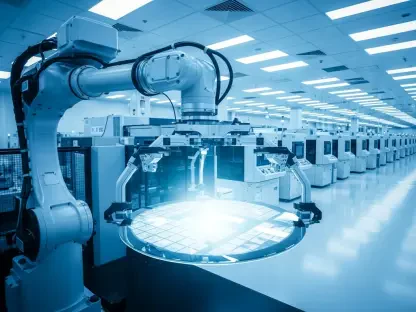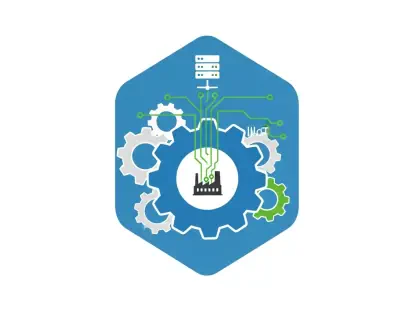In an unexpected move, President Donald J. Trump’s administration has proposed the repeal of the US CHIPS and Science Act, a significant shift from federal subsidies to increased tariffs on foreign imports. This policy change is poised to bring about major implications for the Philippine semiconductor industry, which finds itself at a crossroads of both challenges and opportunities.
Implications of the CHIPS Act Repeal
Shift from Subsidies to Tariffs
The CHIPS and Science Act, initially established under former President Joe Biden, was designed to stimulate domestic chip manufacturing in the US with $52.7 billion in federal subsidies. These subsidies aimed to invigorate the semiconductor manufacturing landscape within the US and reduce reliance on Chinese manufacturers by diversifying production sites globally. However, Trump’s proposed repeal of the act shifts the focus towards increasing tariffs on foreign imports instead. This move is anticipated to be a significant disruptor for the Philippine semiconductor sector, given its role in the global supply chain.
The policy shift from subsidies to tariffs represents an ideological pivot in how the US government intends to bolster its domestic semiconductor industry. Rather than providing financial incentives to attract investment within the country, the administration now seeks to erect tariff barriers to protect local manufacturers from foreign competition. This new approach could potentially undermine the established economic relationships with countries like the Philippines, which have benefited from collaborative ventures with American semiconductor companies. The impact of elevated tariffs could reverberate through the industry, affecting everything from investment flows to export volumes.
Potential Benefits for the Philippines
Despite the potential setbacks that could arise from the CHIPS Act’s repeal, the Philippines could stand to benefit as US semiconductor companies might turn to more cost-efficient manufacturing and assembly locales to mitigate the impact of increased tariffs. Dean Philip Arnold P. Tuaño from the Ateneo School of Government highlights that this shift could present a silver lining for the Philippines, offering it a chance to position itself as a viable and competitive alternative to China in the semiconductor supply chain.
By stepping up its capabilities in semiconductor testing and assembly, the Philippines could attract American companies looking to relocate their operations to more cost-effective environments. The geographical proximity to major markets in the Asia-Pacific region, coupled with competitive labor costs, positions the Philippines as a strategic partner for US firms seeking to diversify their production bases. However, maximizing these opportunities would necessitate substantial investments in infrastructure, workforce training, and technological upgrades to meet the industry’s stringent demands.
The Role of the Philippines in the Supply Chain
Historical Investment Destination
Historically, the Philippines has been a prime destination for US semiconductor investment, cementing its role as a crucial player in the global semiconductor supply chain. The potential repeal of the CHIPS Act, however, threatens to upend this trend, potentially leading to a reduction in new investment by American semiconductor manufacturers. This shift in investment dynamics is likely to create ripple effects throughout the Filipino semiconductor sector, influencing everything from job creation to technological advancement.
Nonetheless, the Philippines can still leverage its established reputation as a reliable hub for semiconductor testing and assembly to offset some of the negative impacts of the policy shift. The country’s track record in providing quality services in this domain could serve as a mitigating factor against declining investments. By continuing to enhance its capabilities and demonstrating reliability and efficiency, the Philippines can maintain and even expand its role within the semiconductor supply chain, showcasing itself as a valuable partner to global tech giants.
Strengthening Capabilities
Experts in the industry stress the need for the Philippines to enhance its semiconductor testing and assembly capabilities to solidify its position amidst the changing policy landscape. Professor Tuaño suggests that the country should amplify its efforts in improving engineering and assembly training programs, strengthening regional ties, and attracting significant infrastructure investments to remain competitive. These steps are seen as crucial to maintaining the Philippines’ standing as a vital component of the semiconductor ecosystem in Southeast Asia.
Investment in human capital is just as important as physical infrastructure for the country’s semiconductor sector. By collaborating with industry leaders and academic institutions, the Philippines can develop a highly skilled workforce capable of handling the sophisticated demands of modern semiconductor manufacturing. Strengthening partnerships with neighboring countries in the region can also lead to shared technological advancements and economic synergies, further bolstering the Philippines’ capacity to serve as a pivotal link in the global supply chain.
Industry Perspectives
Optimism Amid Challenges
Robert M. Young, President of the Foreign Buyers Association of the Philippines, remains optimistic despite the potential challenges posed by the CHIPS Act’s repeal. He believes that the Philippines might be the least affected due to its relatively smaller share in the global semiconductor market, potentially insulating it from the most severe impacts of the policy change. Nevertheless, Young acknowledges the critical importance of exploring new markets to maintain economic stability and support employment levels within the industry.
By identifying and capitalizing on opportunities in burgeoning markets, the Philippines can diversify its revenue streams and mitigate the risks associated with the changing US policy landscape. Young suggests that the country should look towards South Korea and Taiwan, nations that might require subcontractors in the semiconductor industry. Building robust trade relations with these countries could open up alternative avenues for growth and ensure the sustained prosperity of the Philippine semiconductor sector.
Economic Assessment
Michael L. Ricafort, Chief Economist at Rizal Commercial Banking Corp., provides a more cautious outlook, highlighting that the repeal of the CHIPS Act could forfeit potential increases in sales for Philippine electronic exporters to the US. This perspective underscores the possible negative ramifications of the policy shift on the local industry’s growth trajectory. Without the benefits of subsidies and the tariff barriers in place, many Philippine exporters may find it challenging to maintain their competitiveness in the US market.
Ricafort’s analysis suggests that the local semiconductor industry must brace for a period of uncertainty and potential contraction if the proposed tariffs are implemented. This highlights the importance of diversifying export destinations and reducing reliance on a single market. Amidst these challenges, the need for strategic planning and proactive measures becomes evident, ensuring that the Philippine semiconductor industry can navigate the tumultuous landscape effectively and sustain its growth over the long term.
Preparation for the Future
Impact on Workforce Development
Tereso O. Panga, Director General of the Philippine Economic Zone Authority, underscores the potential adverse effects on manpower training and the development of advanced chip manufacturing facilities. He emphasizes that a skilled and knowledgeable workforce is crucial for the Philippines to host more assembly, testing, and packaging-based semiconductor firms. This need becomes even more critical as the country aims to expand its vision of establishing advanced wafer fabrication manufacturing facilities to compete with global counterparts.
Investing in continuous education and training programs ensures that the Filipino workforce is equipped with the latest skills and technical knowledge demanded by the semiconductor industry. Panga suggests that enhancing partnerships between the government, educational institutions, and private industry stakeholders can facilitate the creation of a robust talent pipeline. By securing a highly skilled labor force, the Philippines can provide a compelling value proposition to multinational companies looking to relocate or expand their operations within the region.
Industry Growth Opportunities
In an unexpected move, President Donald J. Trump’s administration has proposed repealing the US CHIPS and Science Act. This represents a significant policy shift from offering federal subsidies to imposing increased tariffs on foreign imports. The proposed change could have substantial impacts on the semiconductor industry, particularly affecting countries like the Philippines, which is now facing a mix of both challenges and potential opportunities. The Philippine semiconductor sector, a crucial player in the global supply chain, might have to navigate new economic landscapes, balancing between the rising tariffs and exploring ways to adapt and innovate. The ramifications of such a policy adjustment will likely ripple through the industry, prompting businesses and governments alike to reassess strategies and possibly reshape international trade relationships. This move by the Trump administration underscores a broader trend of shifting economic policies, which could redefine the global semiconductor market dynamics and influence future international commerce.









